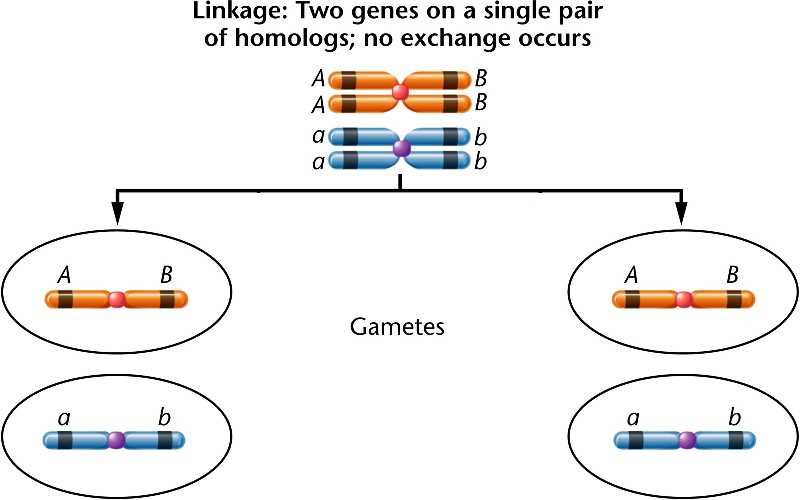
Gene linkage refers to the tendency of genes located on the same chromosome to be inherited together. This phenomenon was first observed by Thomas Hunt Morgan in the early 20th century during his studies on fruit flies. He discovered that certain traits, such as eye color and wing shape, were often inherited together because they were located on the same chromosome.
Gene mapping is the process of determining the relative positions of genes on a chromosome. By studying genetic crosses and analyzing the patterns of inheritance of different traits, scientists can construct gene maps that illustrate the positions of various genes on a chromosome.
The key to understanding gene linkage and creating accurate gene maps is the concept of recombination. During meiosis, the process of cell division that produces gametes, the chromosomes exchange genetic material through a process called crossing over. This results in new combinations of genes on the chromosomes of the offspring, which can be used to determine the relative distances between genes.
Using this knowledge, scientists have been able to create detailed gene maps for various organisms, including humans. These maps are crucial for genetic research and have helped facilitate the identification and study of disease-related genes. Understanding gene linkage and gene maps is essential for unraveling the complexities of inheritance and advancing our knowledge of genetics.
What are gene linkage and gene maps?
Gene linkage refers to the tendency of certain genes to be inherited together due to their close physical location on a chromosome. In other words, these genes are said to be located in close proximity to each other and are usually inherited as a unit. Gene linkage was initially discovered by Thomas Hunt Morgan in the early 20th century through his famous experiments with fruit flies. He observed that certain traits, such as eye color and wing shape, tended to be inherited together more frequently than would be expected by chance.
Gene maps, also known as genetic maps or linkage maps, are diagrams that depict the relative positions of genes on a chromosome. These maps are constructed based on the concept of gene linkage and the frequency of recombination events between genes. Recombination refers to the exchange of genetic material between homologous chromosomes during meiosis. By analyzing the frequency of recombination between different genes, scientists can determine the relative distances between them and create a map of their positions on the chromosome.
Gene maps are valuable tools in genetics research as they provide important information about the organization and arrangement of genes on chromosomes. They help scientists understand how genes are inherited and how they contribute to specific traits and diseases. Gene maps can also be used to predict the likelihood of certain genetic disorders occurring in individuals or populations based on the presence or absence of specific genes or markers. Overall, gene linkage and gene maps play a crucial role in advancing our understanding of the complex nature of genetics and inheritance.
Understanding gene linkage
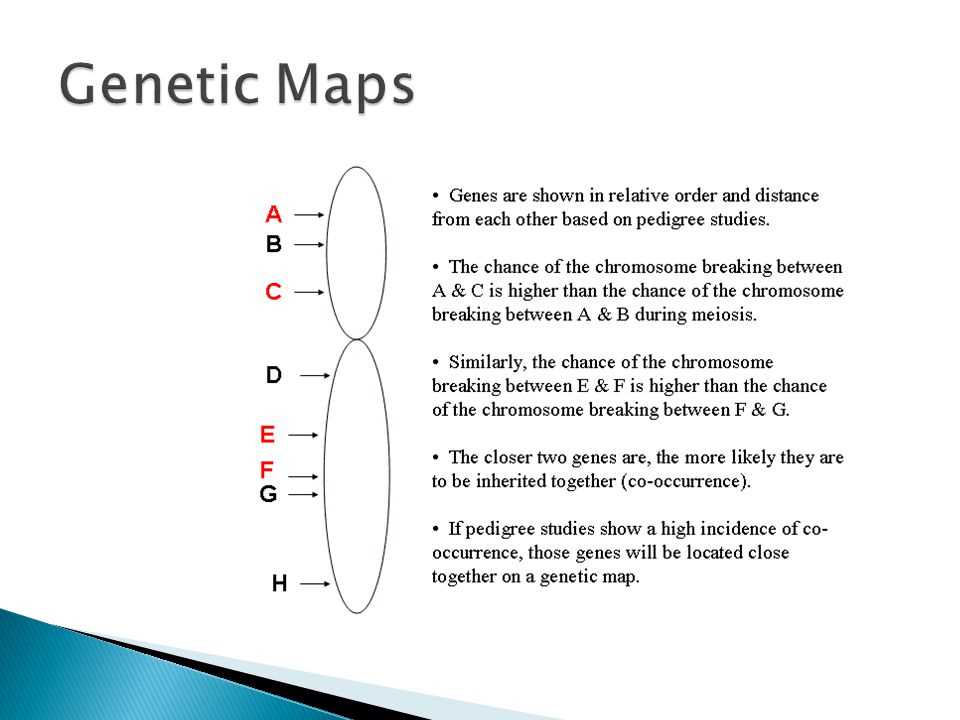
Gene linkage refers to the tendency of certain genes to be inherited together due to their close proximity on a chromosome. This phenomenon was first described by Thomas Hunt Morgan in his experiments with fruit flies in the early 20th century. Morgan noticed that certain traits seemed to be inherited together more frequently than expected based on independent assortment, suggesting that these genes were physically linked on the same chromosome.
The concept of gene linkage has since been expanded upon and studied in various organisms, including humans. It has been found that genes located close to each other on the same chromosome are more likely to be inherited together, while genes located far apart are more likely to undergo independent assortment. This has important implications for understanding inheritance patterns and the development of genetic maps.
One of the key tools used to study gene linkage is the construction of linkage maps. These maps show the relative positions of genes on a chromosome and can help researchers determine the distance between genes and the likelihood of recombination events occurring between them. By examining the frequency of recombination, scientists can estimate the physical distance between genes and create a map of their location on the chromosome.
Gene linkage and mapping are also important for identifying the genetic basis of diseases and traits. If two genes are closely linked and consistently inherited together, it suggests that they are part of the same genetic pathway or have a functional relationship. This information can be used to identify genes that may be involved in certain diseases or traits and provide insights into their underlying mechanisms.
- Overall, understanding gene linkage is crucial for understanding inheritance patterns, creating genetic maps, and identifying the genetic basis of diseases and traits. It provides valuable insights into the organization and function of genes within a chromosome and helps researchers uncover the complex interactions between genes.
- Gene linkage refers to the tendency of certain genes to be inherited together due to their close proximity on a chromosome.
- Morgan noticed that certain traits seemed to be inherited together more frequently than expected based on independent assortment, suggesting gene linkage.
- Genes located close to each other on the same chromosome are more likely to be inherited together, while genes located far apart are more likely to undergo independent assortment.
- One of the key tools used to study gene linkage is the construction of linkage maps, which show the relative positions of genes on a chromosome.
- Gene linkage and mapping are crucial for identifying the genetic basis of diseases and traits and provide insights into the organization and function of genes within a chromosome.
Definition and Concept
Gene linkage refers to the phenomenon in which two or more genes are located close to each other on the same chromosome, leading to their inheritance together as a group. Genes that are physically close to each other on a chromosome are more likely to be inherited as a unit, rather than independently. The closer two genes are, the less likely they are to undergo recombination during cell division, resulting in the co-inheritance of the linked genes.
This concept of gene linkage was first proposed by the geneticist Thomas Hunt Morgan in the early 20th century. Through his experiments with fruit flies, Morgan observed that certain traits, such as eye color and wing shape, seemed to be inherited as a unit, suggesting that they were linked on the same chromosome.
Gene maps are tools used to visualize the position and order of different genes on a chromosome. These maps are created based on the frequency of recombination events between linked genes, which provides information about their relative distance from each other. Recombination occurs when genetic material is exchanged between homologous chromosomes during meiosis, and the frequency of recombination between two genes can be used to estimate the distance between them.
Gene maps are typically represented as linear sequences of genes, with each gene placed at a specific position along the chromosome. The distances between genes on the map are measured in map units, where one map unit corresponds to a 1% chance of recombination occurring between two genes. By determining the relative positions of genes on a chromosome, gene maps help scientists understand the organization of genetic material and how it is inherited.
How is gene linkage determined?
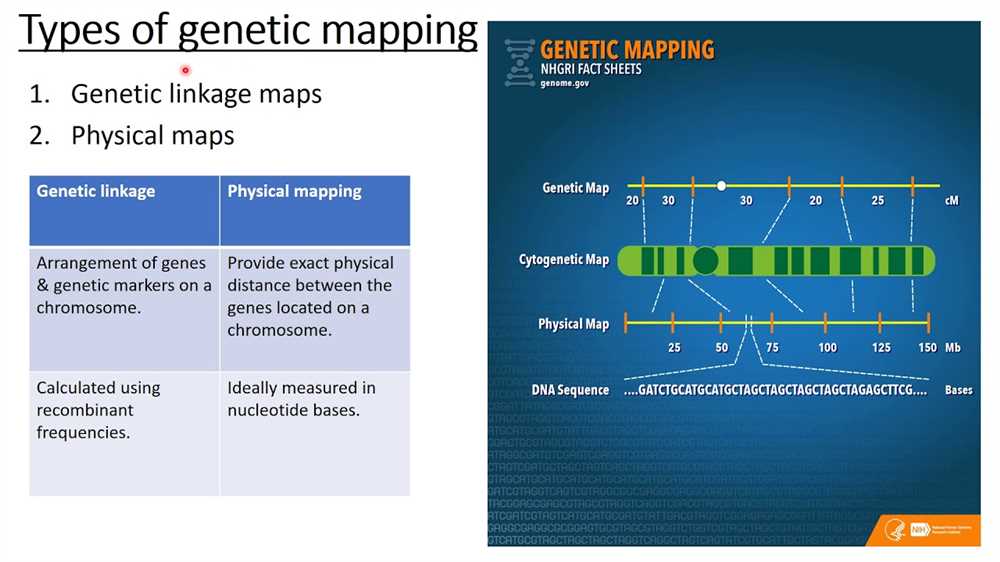
Gene linkage is determined through experiments and observations of genetic traits and their inheritance patterns in organisms. One of the key methods used to study gene linkage is through the crossing of individuals with known genetic traits. By crossing organisms with different traits, researchers can observe how these traits are inherited and determine if they are linked to specific genes.
One common method used to determine gene linkage is through the study of recombination frequencies. Recombination occurs during meiosis when genetic material from the two parents is mixed and shuffled to create new combinations of genes in the offspring. The frequency of recombination events between two genes indicates how closely they are located on the same chromosome. Genes that are far apart on a chromosome are more likely to recombine, while genes that are close together are less likely to recombine.
To determine the linkage of genes, researchers can perform genetic crosses and analyze the resulting offspring. If two genes are located on different chromosomes, they will assort independently and produce offspring with a variety of different trait combinations. On the other hand, if two genes are located close together on the same chromosome, they are more likely to be inherited together and produce offspring with specific trait combinations.
In addition to crossing experiments, the use of molecular markers and DNA sequencing technologies has greatly advanced our understanding of gene linkage. Molecular markers are specific sequences of DNA that can be used to track the inheritance of genes. By analyzing the presence or absence of molecular markers in different individuals and generations, researchers can determine the linkage of genes and construct gene maps that show the relative positions of different genes on a chromosome.
In conclusion, gene linkage is determined through a combination of genetic crosses, analysis of recombination frequencies, and the use of molecular markers. By studying the inheritance patterns of traits and the frequency of recombination events, researchers can determine the linkage of genes and create maps that illustrate their positions on chromosomes.
Significance of Gene Linkage
Gene linkage plays a crucial role in understanding the inheritance patterns of genes and determining their relative positions on a chromosome. It provides insights into how genes are inherited together as a unit, and how they may be separated through crossover events during meiosis. This knowledge is vital in comprehending the basis of genetic disorders and traits, as well as in predicting the likelihood of certain genes being inherited together or independently.
Gene mapping is one of the primary applications of gene linkage studies. By analyzing the frequency of recombination between genes, scientists can create gene maps that depict the relative distances between genes on a chromosome. These maps are invaluable tools for studying the organization and function of genomes, as well as for identifying genetic markers associated with diseases and traits.
Furthermore, gene linkage allows researchers to investigate the mechanisms of crossing over and recombination. These processes contribute to the genetic diversity of offspring and can result in the shuffling of genetic material between chromosomes. By studying gene linkage, scientists can gain insights into how genetic variations arise and contribute to evolution.
In addition, gene linkage analysis has practical applications in genetics and medicine. It can help identify disease-causing genes and determine their locations, paving the way for the development of diagnostic tests and targeted therapies. It can also aid in understanding patterns of inheritance for complex genetic diseases, which involve multiple genes and environmental factors.
Overall, gene linkage is a fundamental concept in genetics that enables scientists to map genes, study genetic diversity, and unravel the genetics of diseases. It plays a critical role in advancing our understanding of inheritance patterns and the complexities of the genome.
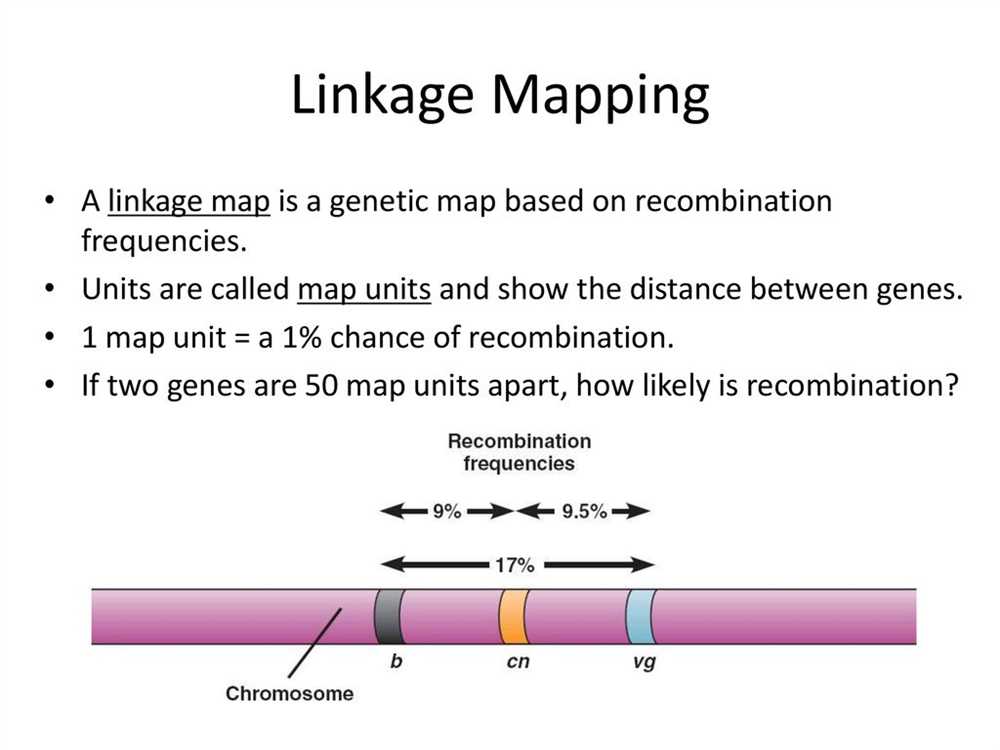
The Basics of Gene Maps
Gene maps are used to determine the relative locations of genes on a chromosome. These maps are important for understanding the organization of genes and their relationship to each other. The main goal of gene mapping is to create a visual representation of the genes on a chromosome, showing their positions and the distances between them.
Gene linkage is the term used to describe the tendency of certain genes to be inherited together due to their close proximity on the same chromosome. This closeness can result in less frequent recombination events, which can be used to estimate the distance between genes. By analyzing the frequency of recombination events between different genes, researchers can construct a map of their relative positions.
One common method used for gene mapping is through crossing over experiments. This involves breeding organisms that carry different versions of genes and observing the pattern of gene inheritance in their offspring. By analyzing the frequency of different gene combinations in the offspring, researchers can infer the relative distance between the genes.
Gene maps are typically represented as diagrams, with each gene represented by a point along the chromosome. The distance between genes is often measured in centimorgans (cM), which represents the likelihood of a recombination event occurring between two genes. The higher the distance in centimorgans, the more likely the genes are to separate during recombination.
Overall, gene maps provide valuable insights into the organization of genes on a chromosome and the relationships between them. They are essential tools for geneticists, allowing them to study the inheritance patterns of genes and understand how they contribute to various traits and diseases.
Definition and Importance
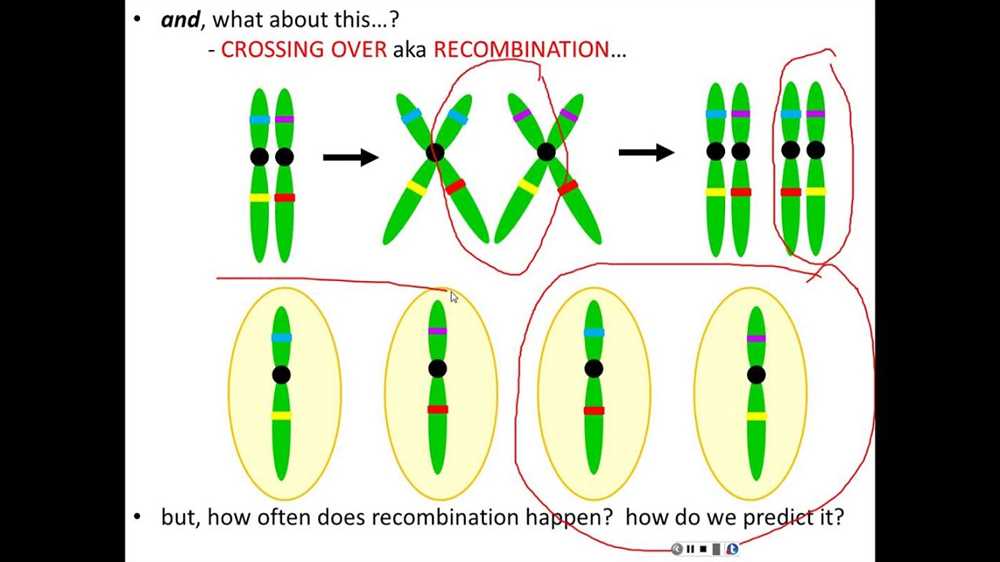
The concept of gene linkage refers to the tendency of genes located close to each other on a chromosome to be inherited together, as they are less likely to be separated by genetic recombination during meiosis. This phenomenon was first observed by Thomas Hunt Morgan in the early 20th century while studying the inheritance of traits in fruit flies. Linked genes, or genes that are located near each other on the same chromosome, can be used to create gene maps that provide valuable information about the organization and location of genes within a genome.
Gene maps are crucial tools in genetics research as they allow scientists to study the positions of genes relative to each other and to better understand their functions. By examining the recombination frequencies between linked genes, researchers can determine the order of genes on a chromosome and estimate the distances between them. This information is essential for identifying the genetic basis of complex traits, such as diseases, and for mapping the location of specific genes of interest. Gene mapping techniques have been especially important in the field of human genetics, where they have contributed to the identification of disease-causing genes and the development of genetic tests.
Overall, gene linkage and gene maps play a fundamental role in the study of genetics and have revolutionized our understanding of inheritance patterns and the organization of genetic material. By providing insights into the relationships between genes and their locations within a genome, these tools have paved the way for advancements in fields such as medicine, agriculture, and evolutionary biology. The ability to map genes and determine their order and location is essential for unraveling the complexities of genetic traits and diseases, and continues to be an ongoing area of research within the field of genetics.